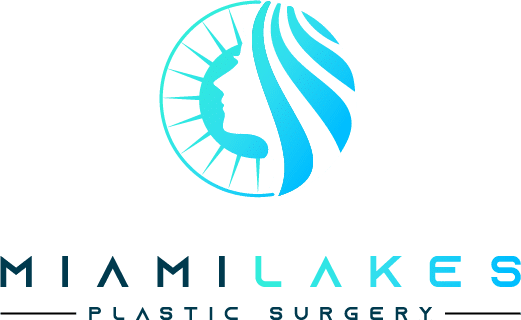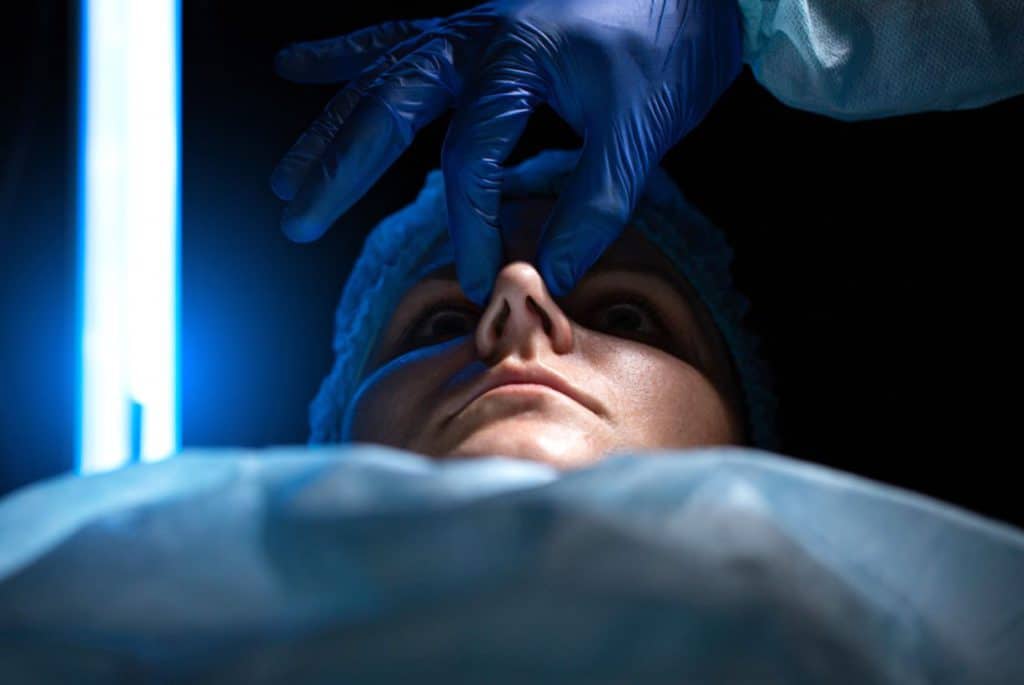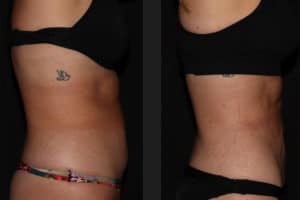In today’s world, there are a dizzying variety of cosmetic treatments available to suit the needs of virtually every patient. So to find the right type of nose surgery, you’ll need to be guided by some solid information to make the best choice for yourself.
Both septoplasty and rhinoplasty are cosmetic procedures that can correct cosmetic or structural problems with the nose. However, each type of surgery addresses somewhat different concerns. The specific type of nose surgery that you need is dependent upon the specific problems that you are having with your nose, as well as what you hope to achieve.
| Septoplasty | Rhinoplasty |
|---|---|
| Purpose: Correct a deviated septum | Purpose: Change the shape or size of the nose |
| Focus: Improving breathing and relieving sinus pressure | Focus: Improving the appearance of the nose |
| It may involve only the inside of the nose | It may involve both the inside and outside of the nose |
| Results in a straightened septum | Results in a changed nose shape or size |
| May be covered by insurance if it is medically necessary | Usually considered cosmetic and not covered by insurance |
Please note that this table is a general guide and specific cases may vary. It is best to consult with a plastic surgeon to determine the best course of action for your individual needs and goals.
What is septoplasty?
A septoplasty is a type of cosmetic surgery for straightening the bone and cartilage dividing the nostrils. Known as the nasal septum, this structure can be found running between both nostrils; however, some people have a deviated, or crooked, septum. This can be caused by genetics or some type of injury or trauma to the nose.
Having a problem with your nose can affect the appearance of your entire face, as it runs down the exact middle of it. A deviated septum can also cause health problems if it prevents you from breathing normally. A septoplasty may involve more than just bone and cartilage; structures like polyps may also be removed to enhance breathing.
The Three Types of Septoplasty
- Nasal septoplasty: Repairs deviated septum.
- Turbinate reduction: Reduces a nasal structure called the turbinate.
- Nasal polyp removal: Removes nasal polyps that can obstruct the airway.
What is rhinoplasty?
Popularly known as a “nose job,” this cosmetic procedure is performed to improve the functionality and aesthetics of the nose. It leads to more balanced facial proportions and can address a wide range of cosmetic concerns:
- Crooked nose
- Nasal tip asymmetry
- Hump on nose
- Length of the nose or bulbous tip
There are two different types of rhinoplasties: open and closed.
Open Rhinoplasty
If you need an open rhinoplasty, you would be under general anesthesia or what is known as twilight sedation. Your plastic surgeon would create a small incision on the soft tissues separating the nostrils. They would lift up the nasal skin, allowing them access to the underlying structures of the nose.
By performing an open rhinoplasty, your plastic surgeon will be able to lift nasal skin away from the tip so that they have greater access to underlying bone and cartilage. An open procedure also improves the precision of the surgeon.
Closed Rhinoplasty
To perform a closed rhinoplasty, a plastic surgeon would create incisions from within the nose, and inside the nostrils. This is a less intrusive form of nose surgery that is most commonly used for the correction of obstructed airways, reduction of bridge bumps, and correcting minor nose tip problems.
Septoplasty vs. Rhinoplasty
Although both the septoplasty and rhinoplasty procedures involve surgery to the nose, there are some key differences that you should be aware of:
- Purpose: The goal of rhinoplasty is a cosmetic improvement, while septoplasty involves functional restoration.
- Surgical technique: Septoplasty involves techniques performed within the nose, while rhinoplasty can be a closed or open procedure.
- Adjustments: Septoplasty changes the inner nasal structures and septum, while rhinoplasty corrects nasal structures affecting the outer appearance.
- Scarring: Septoplasty procedures leave no noticeable scars, whereas rhinoplasty procedures if the open surgical approach is used, may result in an inconspicuous scar at the nasal base.
- Insurance coverage: Rhinoplasties are not typically covered by insurance, while septoplasties may be fully or partially covered.
How much does a septoplasty or rhinoplasty cost?
There really is no standard cost for the two procedures, as each will vary, depending upon the individual circumstances of the patient involved. You can learn the exact cost of your procedure during your consultation with your plastic surgeon.
What are the risks involved with a septoplasty or rhinoplasty procedure?
Aside from the risks common to all forms of surgery, the two main risks of nose surgery are:
- Asymmetry: Septoplasty and rhinoplasty are complex, highly specialized procedures that may not always result in the perfect symmetry of the nose.
- Dry or runny nose: It is possible that nose surgery will alter nasal airway function, leading to undesirable sensations.
How long does it take to recover from a septoplasty or rhinoplasty?
Recovery time from a typical rhinoplasty procedure is under 10 days. You would have a splint on your nose for around five days, and you should be able to return to normal activities five days after that. Just make sure that you avoid contact sports for about six weeks.
Recovering from a septoplasty takes considerably longer. It can take six weeks or longer to completely recover, and patients are advised to rest for at least one week before resuming normal activities.
References
- American Society of Plastic Surgeons. Septoplasty. https://www.plasticsurgery.org/reconstructive-procedures/septoplasty. Accessed June 17, 2019.
- Most SP, et al. Septoplasty: Basic and advanced techniques. Facial Plastic Surgery Clinics of North America. 2017;25:161.
- American Academy of Otolaryngology — Head and Neck Surgery. Deviated septum. https://www.enthealth.org/conditions/deviated-septum/. Accessed June 17, 2019.
- Bhattacharyya N. Clinical presentation, diagnosis, and treatment of nasal obstruction. https://www.uptodate.com/contents/search. Accessed June 19, 2019.





